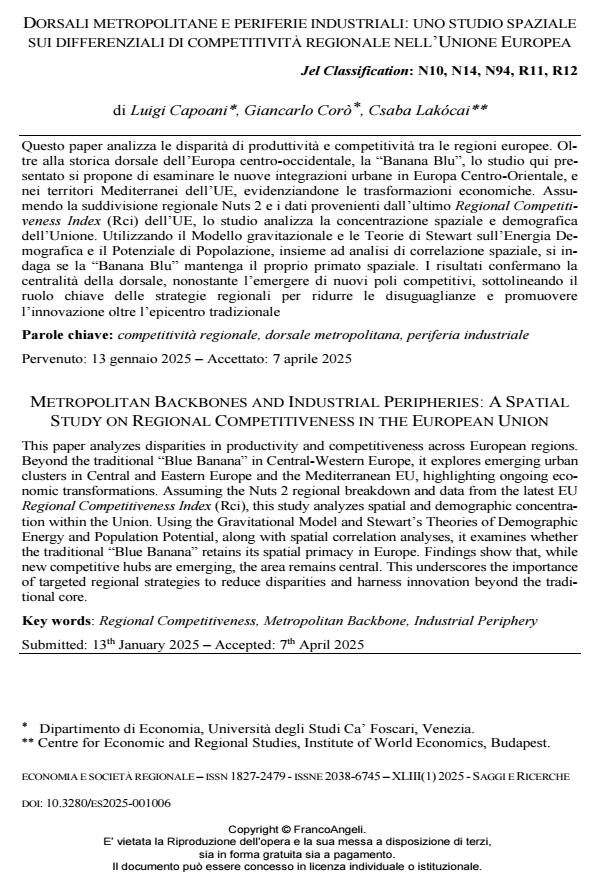Metropolitan backbones and industrial peripheries: a spatial study on regional competitiveness in the european union
Journal title ECONOMIA E SOCIETÀ REGIONALE
Author/s Luigi Capoani, Giancarlo Corò, Csaba Lakócai
Publishing Year 2025 Issue 2025/1
Language Italian Pages 28 P. 87-114 File size 558 KB
DOI 10.3280/ES2025-001006
DOI is like a bar code for intellectual property: to have more infomation
click here
Below, you can see the article first page
If you want to buy this article in PDF format, you can do it, following the instructions to buy download credits

FrancoAngeli is member of Publishers International Linking Association, Inc (PILA), a not-for-profit association which run the CrossRef service enabling links to and from online scholarly content.
This paper analyzes disparities in productivity and competitiveness across European regions. Beyond the traditional “Blue Banana” in Central-Western Europe, it explores emerging urban clusters in Central and Eastern Europe and the Mediterranean EU, highlighting ongoing economic transformations. Assuming the Nuts 2 regional breakdown and data from the latest EU Regional Competitiveness Index (Rci), this study analyzes spatial and demographic concentration within the Union. Using the Gravitational Model and Stewart’s Theories of Demographic Energy and Population Potential, along with spatial correlation analyses, it examines whether the traditional “Blue Banana” retains its spatial primacy in Europe. Findings show that, while new competitive hubs are emerging, the area remains central. This underscores the importance of targeted regional strategies to reduce disparities and harness innovation beyond the traditional core.
Keywords: Regional Competitiveness, Metropolitan Backbone, Industrial Periphery
Jel codes: N10, N14, N94, R11, R12
Luigi Capoani, Giancarlo Corò, Csaba Lakócai, Dorsali metropolitane e periferie industriali: uno studio spaziale sui differenziali di competitività regionale nell’Unione Europea in "ECONOMIA E SOCIETÀ REGIONALE " 1/2025, pp 87-114, DOI: 10.3280/ES2025-001006